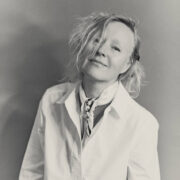
In today’s digital age, A Revolution in Creativity has evolved in unprecedented ways. What was once considered the distinct realms of art and design has now merged into a singular form of expression, thanks to modern technology. Traditionally, art was seen as a means of self-expression, while design served a functional purpose. But in the current digital era, these boundaries have blurred. Artists now have access to digital tools that allow them to combine form and function, creating designs that are both visually captivating and seamlessly functional.
This blending of art and design has ignited a creative renaissance, with digital artists pushing the limits of what’s possible. Aesthetics and usability now work hand in hand, elevating creativity to new heights. One of the most significant contributions of digital art to modern design is the democratization of creativity. Previously, access to artistic tools and platforms was limited to those with the resources and technical skills. Today, anyone with a computer and internet connection can experiment with digital design, resulting in an influx of diverse voices that enrich the creative landscape.
Digital Platforms and NFTs
Online platforms like Behance, Instagram, and NFT marketplaces have provided digital artists with a global stage. These platforms allow creators to share their work, collaborate across borders, and even monetize their art. The rise of non-fungible tokens (NFTs) has been particularly transformative, elevating digital art as a legitimate form of creative expression while offering new revenue streams for artists. NFTs have challenged traditional perceptions of art, turning digital creations into sought-after commodities.
Pushing Aesthetic Boundaries
What makes digital art so influential in modern design is its ability to push aesthetic boundaries. Designers are no longer confined by physical materials or traditional design constraints. The digital realm offers limitless opportunities to experiment with color, form, texture, and space. With augmented reality (AR) and virtual reality (VR) tools, designers can create immersive experiences that go beyond the two-dimensional plane of traditional media.
For instance, in architecture and interior design, AR allows clients to virtually walk through a space before it's built, revolutionizing industries from fashion to automotive design. The ability to visualize, interact with, and manipulate designs in real-time has shifted the focus toward more dynamic, user-centered experiences.
Ethical and Environmental Considerations
However, with the immense power of digital tools comes great responsibility. As digital art becomes further embedded in design, ethical questions arise. What defines art in an era where AI-generated designs are becoming increasingly sophisticated? Who holds ownership over creativity in such instances? Furthermore, the environmental impact of digital creation cannot be overlooked. While digital art may seem like a low-impact alternative to traditional materials, the energy consumption linked to digital platforms, especially the blockchain technology behind NFTs, has sparked debates about sustainability.
As the design world embraces digital art, it's crucial to consider the long-term implications for both the creative community and the environment.
Collaboration in the Digital Era
A new era of collaboration is also unfolding, with digital art serving as a bridge between designers, technologists, data scientists, and coders. This multidisciplinary approach allows for the creation of designs that are both interactive and functional, transcending traditional disciplines. AI-assisted product designs and digital apparel in virtual environments exemplify the ongoing collaboration between art and technology.
Ultimately, those who can harness the power of digital tools to create meaningful experiences will define the future of design. By blending art, technology, and ethical considerations, digital artists and designers are shaping a creative revolution that holds limitless potential.
At Trende Magazine, our Editor-in-Chief and team of talented authors are dedicated professionals who bring a wealth of knowledge, experience, and passion to every page. They work tirelessly to explore trends, share expert insights, and present compelling stories that resonate with our readers. We kindly ask that you respect their findings, viewpoints, and content, as they represent a commitment to excellence and integrity in lifestyle journalism. Your appreciation of their work ensures that Trende Magazine continues to be a trusted source of inspiration and information.














